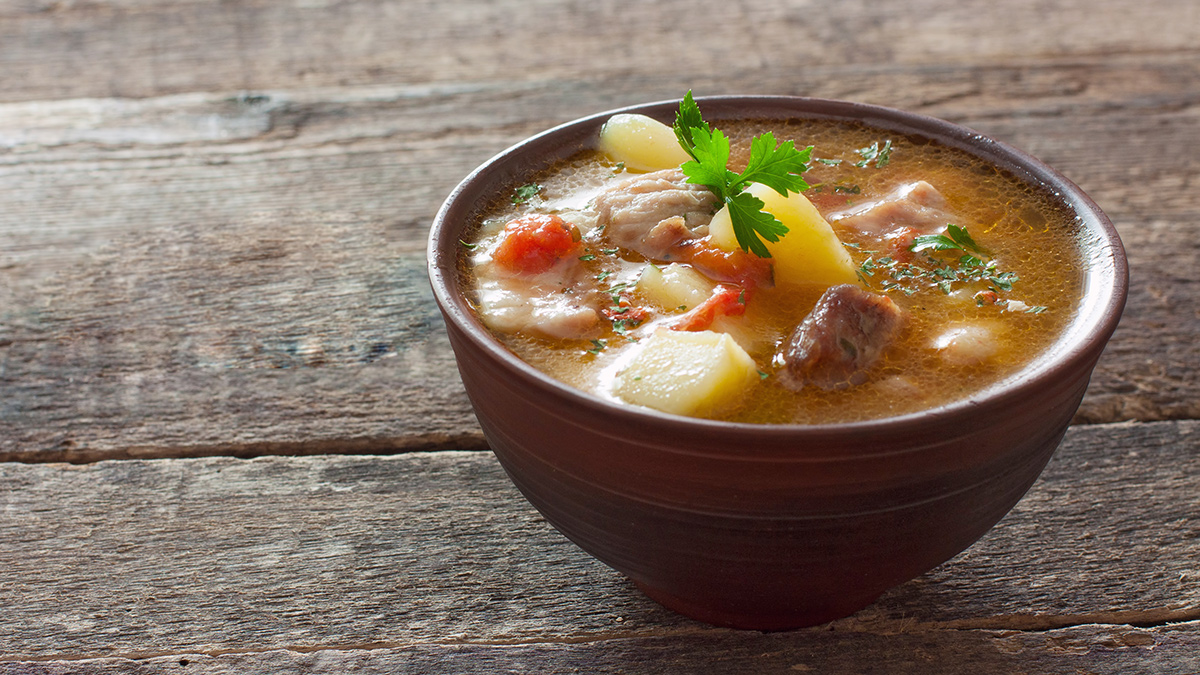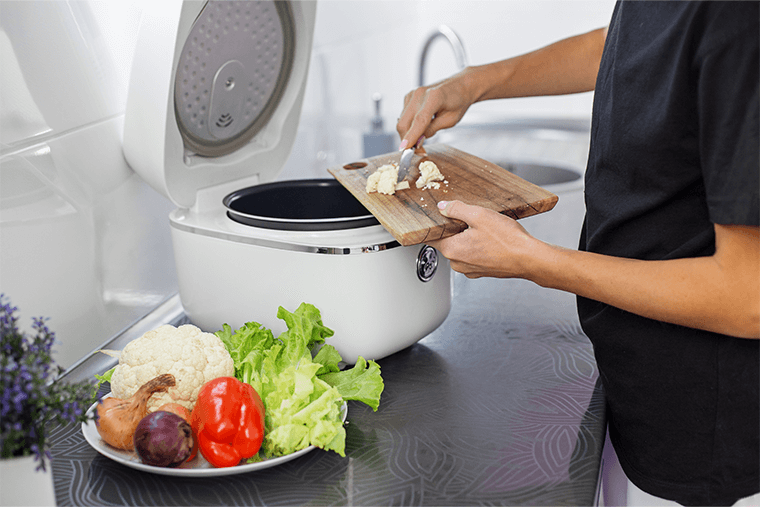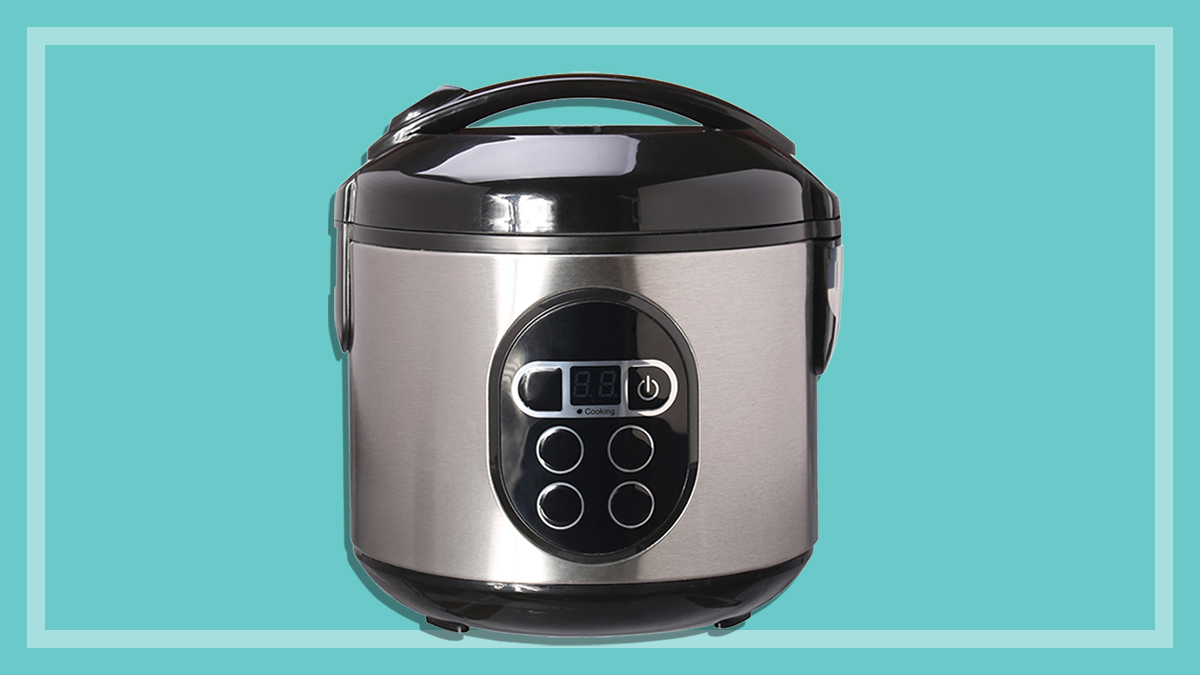Get our independent lab tests, expert reviews and honest advice.
What to know before buying a multi-cooker

If you need a cooking appliance that can perform under pressure and produce a last-minute meal, or alternatively take its time for a hearty, pre-planned dinner, then look no further than a multi-cooker.
On this page:
- What is a multi-cooker?
- Safety when pressure cooking
- Are multi-cookers a sustainable choice?
- Are multi-cookers easy to clean?
- How much do multi-cookers cost?
- Pressure cooker quick tips
- Slow cooker quick tips
- What to look for in a multi-cooker
A multifunction cooker that can both slow cook and pressure cook will save you time and give you versatile cooking options.
What is a multi-cooker?
A multi-cooker combines the functionality of several cooking appliances into one unit. In the past, multi-cookers mainly combined slow cooker and pressure cooker functionality.
However, with limited space in many kitchens, manufacturers are including even more functions in these handy appliances, including rice cooker, steamer and searing capabilities. Some models even have an air fryer function, either in the form of a separate lid or by combining the air fryer lid with the pressure cooker lid.
All this functionality makes multi-cookers a versatile and time-saving benchtop appliance. The slow cooker function suits the more organised person who can spend some time in the morning preparing a meal, while the pressure cooker suits people who like to think about dinner when it’s dinnertime, but need it quick smart.
Safety when pressure cooking
In 2017, Aldi sold a faulty pressure cooker that exploded, causing at least six people to sustain second- and third-degree burns. And the problem has affected more than one brand, with a Bellini pressure cooker from Target also recalled due to a defect in its lid locking mechanism.
To make sure your multi-cooker is safe during pressure-cooking mode, it’s important to look for a locking lid that has more than one locking mechanism. It’s much safer than one that just simply twists on to the top of the cooker.
Are multi-cookers a sustainable choice?
As the name suggests, multi-cookers can carry out a range of functions. If all of these functions are useful to you, a multi-cooker makes sense, as you can reduce the number of appliances you buy (and ultimately send to landfill) rather than owning a slow cooker, rice cooker, pressure cooker and air fryer.
These appliances and cooking functions are also generally more energy-efficient than using your cooktop or oven.
Are multi-cookers easy to clean?
Unfortunately multi-cookers can be difficult to keep clean – the rubber seals and gaskets absorb a lot of the cooking odours and can be almost impossible to remove, and a build-up of food residue can clog the valves and cause issues when pressure cooking.
Keeping your multi-cooker clean is vital to ensure it continues to work effectively, so it’s best to clean it after each use. This will prevent tough stains from building up and is your best chance to keep lingering smells at bay.
Follow the steps below to clean your multi-cooker.
- Make sure the unit is unplugged and has cooled down.
- Pull everything apart, including the cooking bowl and separating the rubber seals and gaskets from the lid (just make sure you know where each piece goes).
- Clean the cooking bowl and lid, either in the dishwasher if it’s dishwasher safe or in the sink with warm, soapy water. Use non-abrasive cleaners so you don’t damage the non-stick surface.
- Clean the rubber seals by soaking them in bi-carb soda or vinegar with a bit of water to eliminate any odours.
- Make sure all bits and pieces are dried properly.
- Once dried, it’s essential to put all the parts back together correctly to ensure the multi-cooker functions properly next time you want to use it.
- Store the multi-cooker with the lid detached to avoid any odour build-up.
How much do multi-cookers cost?
Multi-cookers vary widely in price – the currently available models in our latest test range from $137 all the way up to $800, and we’ve found you generally need to spend a couple hundred dollars to get a good one.
Pressure cooker quick tips
- Regularly check the pressure valve to make sure it’s free from food residue.
- Remove and clean the silicon rubber seal regularly – soak the seal in bi-carb soda (or vinegar) and water to eliminate odours.
- Leave the lid upturned for storage, otherwise the gasket will deform and shorten its life.
- Use a tea towel to open the pressure release valve to protect your hands.
Slow cooker quick tips
- To convert a traditional recipe for a slow cooker, halve the amount of liquid and increase the cooking time.
- One to two hours in the oven is equal to about six to eight hours on low in a slow cooker.
- Don’t reheat leftovers in a slow cooker – use a microwave, cooktop or oven instead.
- Buying cheaper cuts of meat that require longer cooking times will give better flavour and a more tender result.
Take a look at our slow-cooked corned beef recipe that’s used in our slow cooker test.
Most of our slow cooker tips can also be applied to multi-cookers in slow cooking mode.
What to look for in a multi-cooker
Capacity
As with a slow cooker, a 3–4.5L multi-cooker will suit if you’re cooking for 1–2 people, and a 5–8L model will be a better choice if you’re cooking for larger numbers or you like to have leftovers. The models we test in our multi-cooker reviews range in capacity from 5.7–8L.
Type of cooking bowl
Cooking bowls tend to be non-stick or ceramic coated non-stick, but we’ve tested models with stainless steel cooking bowls too. It’s important to look after the non-stick surface – it can become scratched by using metal utensils and you don’t want the coating ending up in your food. Stainless steel is much more durable and is becoming a more desirable option, but it can leave a calcium residue that can be difficult to clean.
Steam release valve
When using the pressure cooker setting, it’s important that the model has a steam release mechanism to release the steam at the end of cooking. There are two types: automatic steam release works to release steam without manually pressing or turning a dial, and manual steam release where you’ll need to turn a switch or flick the pressure release valve to release the steam. You can also have a natural release which is where the steam releases slowly over a period of time.
Pressure settings
Different pressure settings let you adjust the amount of time it takes to cook different dishes. Pressure cookers can have up to three types of pressure: high, medium and low. These settings can have an operating pressure kPa (kilopascals) range of 95–120 kPa for the high or max setting, 70–90 kPa for the medium setting, and 30–50 kPa for the low setting.
In most cases, choosing the pressure setting is as simple as using the auto cook menu which will decide the pressure setting for you. If you’re using the manual setting, you may have to choose the pressure. As a rule, the higher the pressure, the quicker the cooking time. But don’t forget, the longer the cooking time, the better the flavour development.

Cooking times
Pre-programmed cooking times make these machines easier to use. Some models even have pre-programmed settings for food types, such as pot roast, curry, rice and more.
Controls
Look for written labelling with indicator lights, a clear on/off control and a large digital display that’s clear and bright. A separate switch away from the steam release control is a safer option when releasing steam, while a countdown timer with audible feedback can alert you when preheat is reached and when cooking is completed.
Exterior
There should be few or no cracks or crevices where food can get trapped. Sealed controls are also easier to wipe clean. Avoid stainless steel exteriors if it’s not fingerprint resistant.
Cleaning
Each part should be easy to disassemble and clean, and then reassemble. All pressure cooker lids need extra effort to clean after each use to ensure optimal and safe use. Keep in mind that stainless steel exteriors are generally more time-consuming to clean.
Automatic setting
This is useful as it starts the process on high to bring the food up to a higher temperature and then switches to a low temperature for the remaining cooking time.
Steaming and warming feature
Models with extra features like steaming and warming have added versatility.
Maximum fill line indicators
Multi-cookers generally come with indicators to show you how much to fill the cooker. Follow these indicators and don’t overfill.






